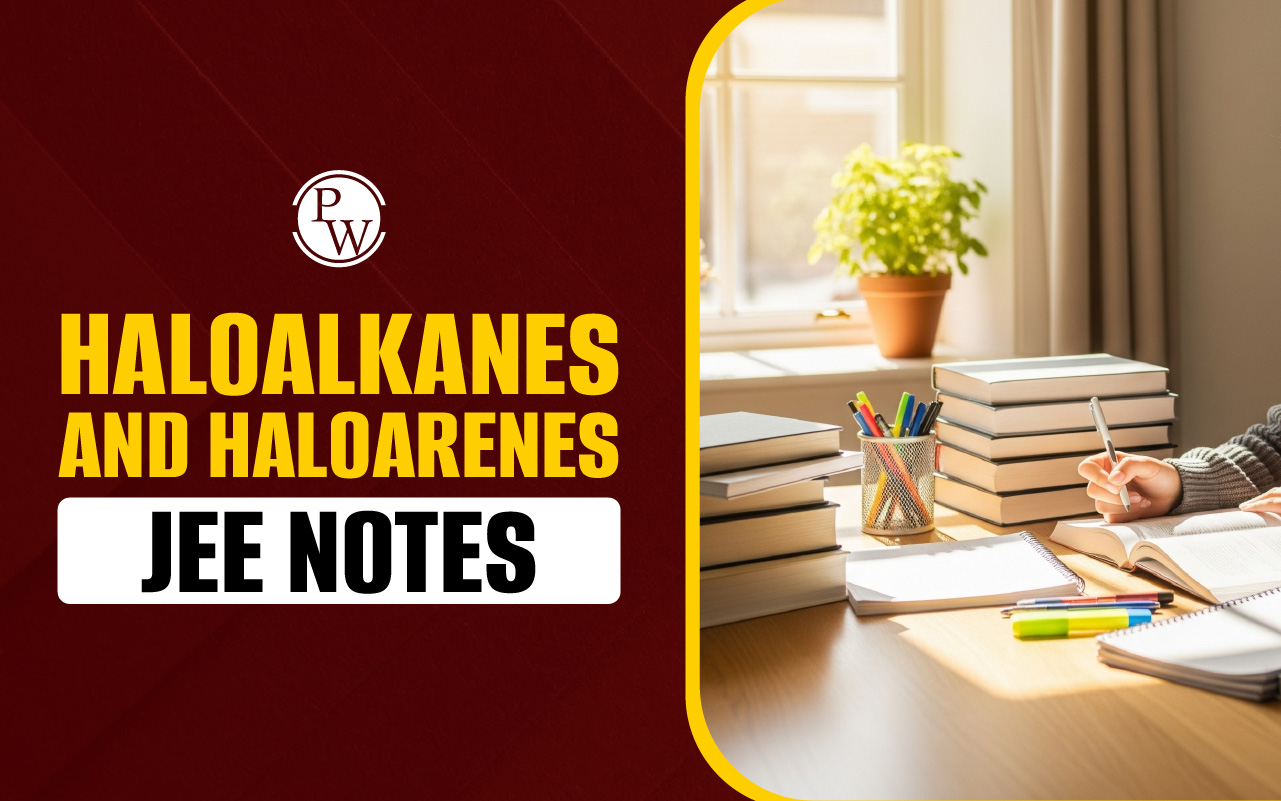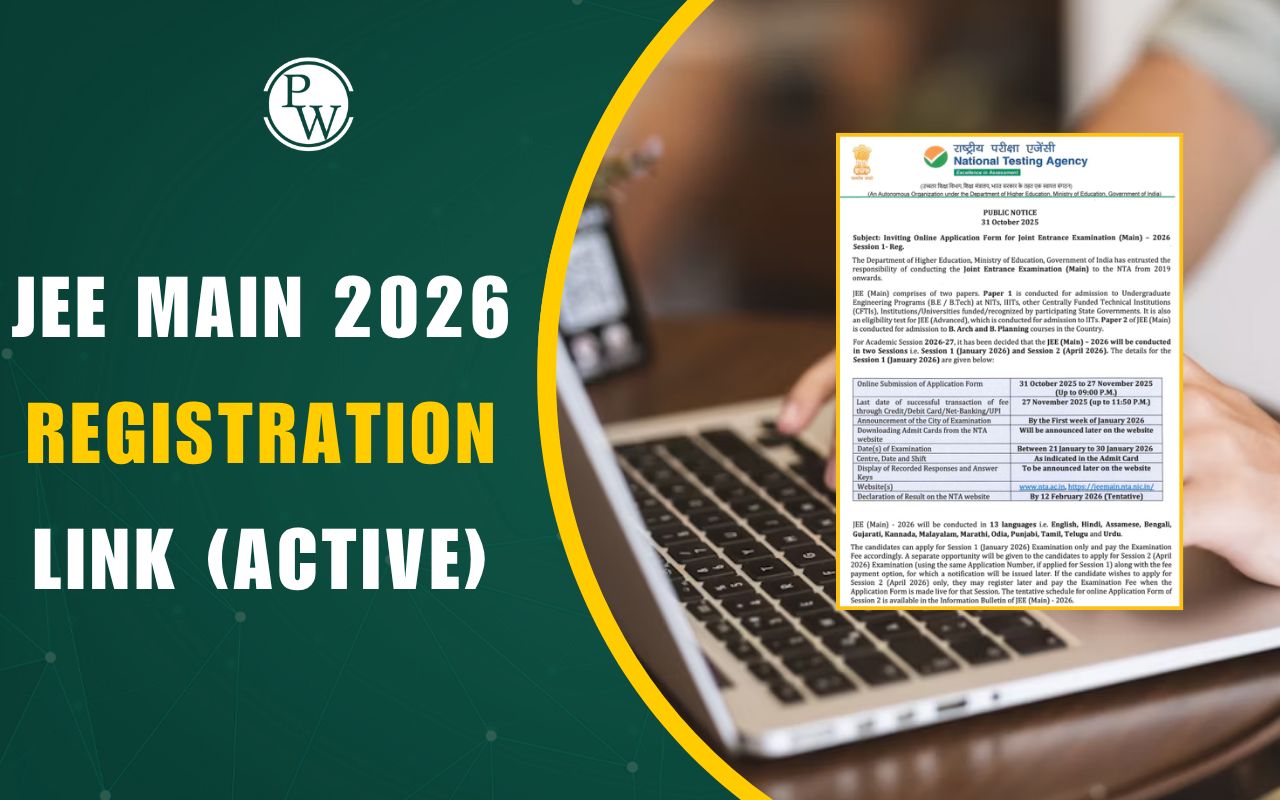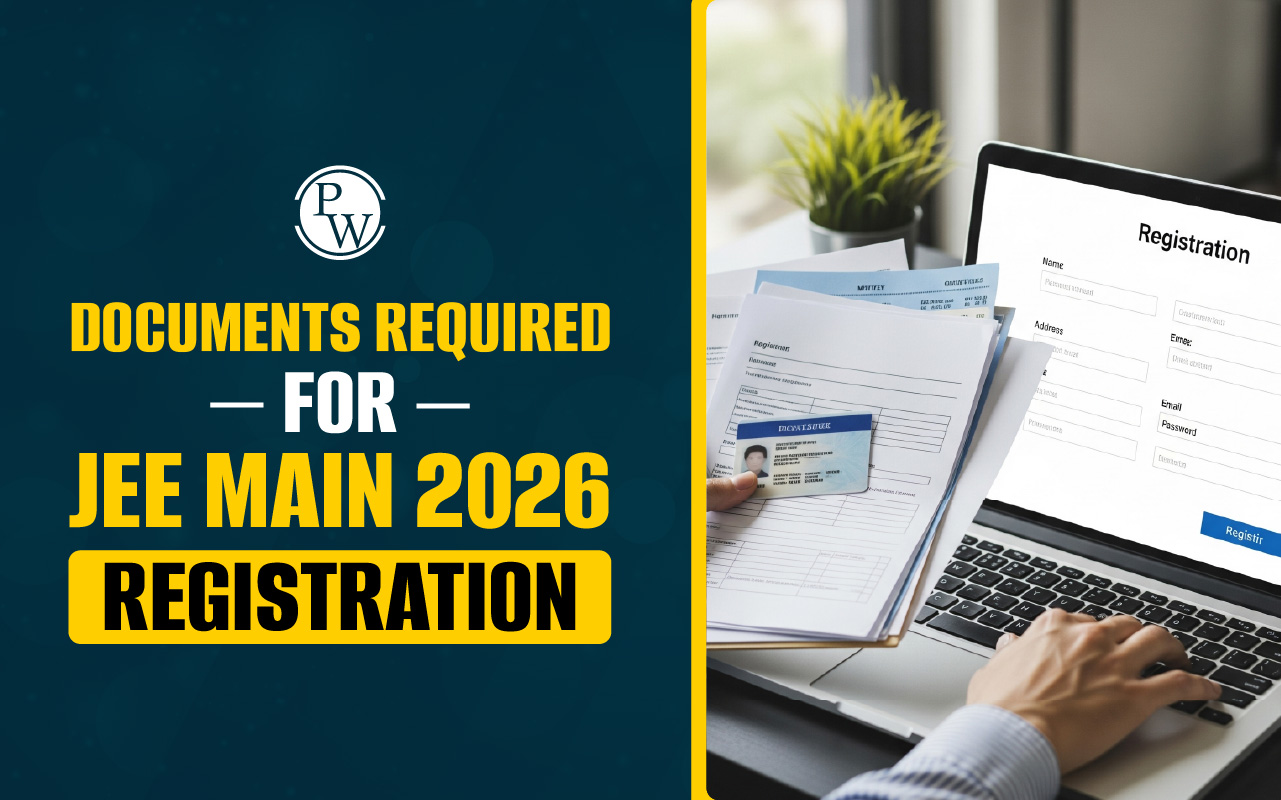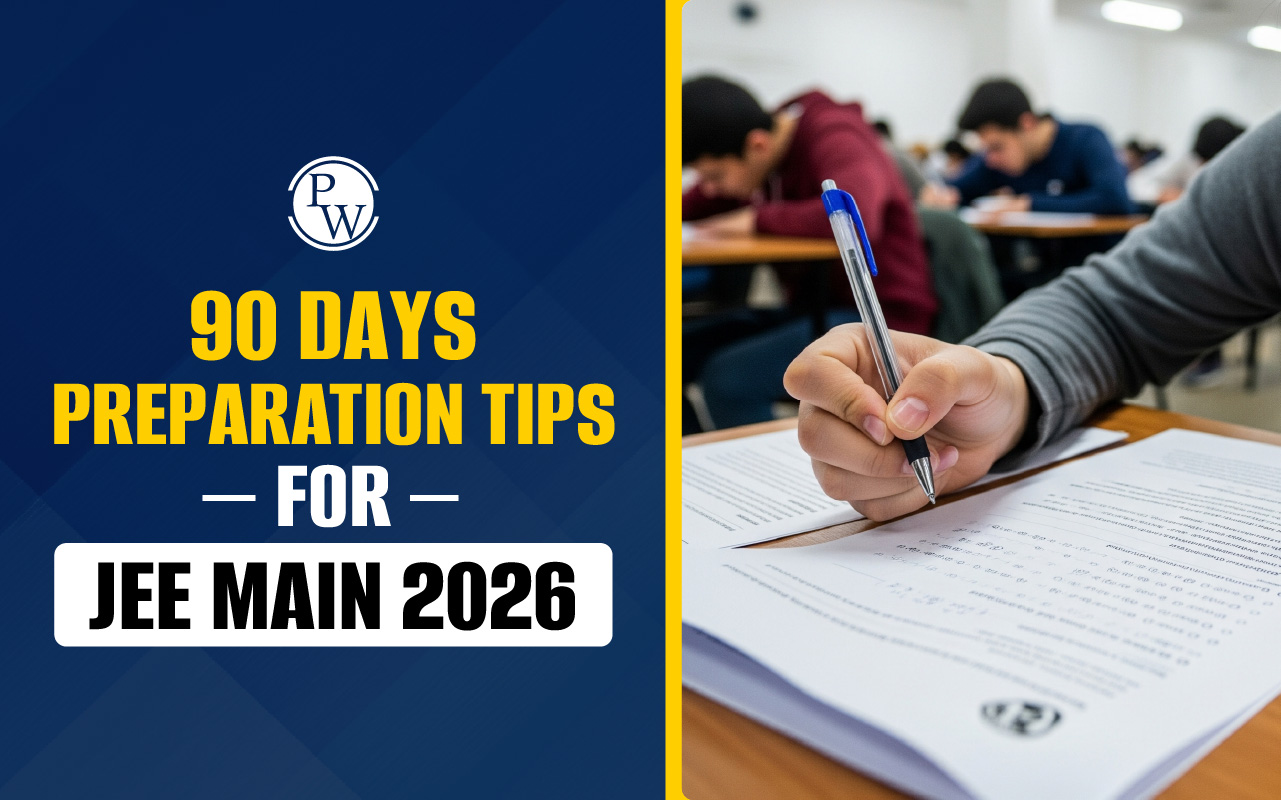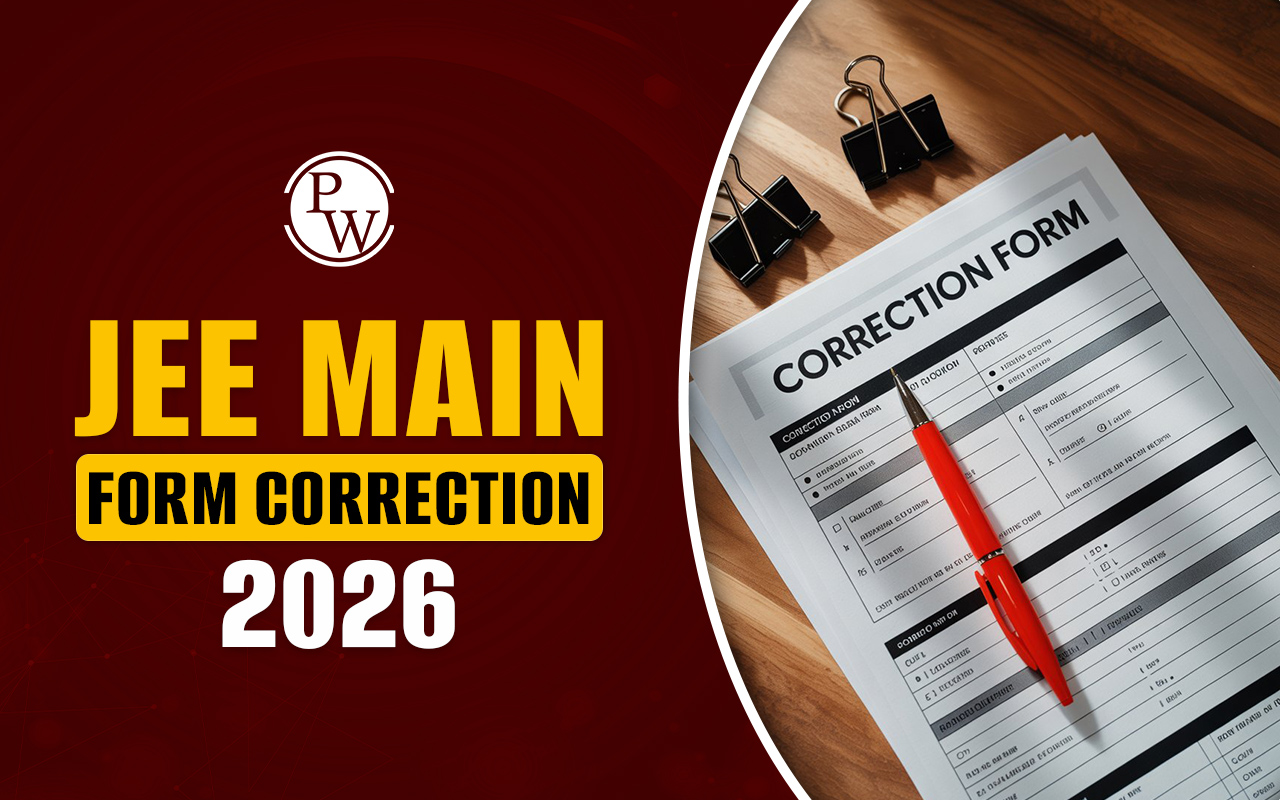

Is JEE Main 2025 Syllabus Reduced?: According to the JEE Main 2025 Latest News , NTA will announce the syllabus for the upcoming JEE Main 2025 in January 2025, while the notification with other important details is expected to be released in the first week of November along with its notification. Many aspirants preparing for this highly competitive exam are curious, asking, "Is the JEE Main 2025 syllabus reduced?" While changes were made to the syllabus in previous years, any updates for this year will only be confirmed once the official syllabus is released. In the meantime, aspirants can review the reduced sections of last year's JEE Main syllabus discussed in this article.
Suggested read: First Offline PW JEE Advanced REAL TestIs JEE Main 2025 Syllabus Reduced?
With the recent introduction of a revised JEE Main 2025 Exam Pattern by the NTA and the removal of optional questions from Section B, it is possible that some changes could be made to the JEE Main 2025 Syllabus . The syllabus of JEE Main includes the topics that aspirants will be tested on in the exam, covering three core subjects: mathematics, physics, and chemistry. These chapters are primarily based on the Class 11 and 12 NCERT curriculum.
For aspirants wondering, "Is JEE Main 2025 syllabus reduced?" It's important to stay updated with the latest news. So, bookmark this webpage to stay informed about any official announcements from the NTA regarding the JEE Main 2025 syllabus. For the meantime, check out the changes made in the syllabus from previous years.
Also read: Last 60 Days Roadmap For JEE Main Session 1 PreparationJEE Main 2025 Syllabus Reduced PDF
The National Testing Agency (NTA) is going to release the official JEE Main 2025 Syllabus Reduced PDF details along with the notification in the next month of the current academic year if there are any changes to the overall syllabus. These updates will provide a clear understanding of any changes made in the syllabus and weightage for both Paper 1 (B.E./B.Tech) and Paper 2 (B.Arch/B.Plan).
- However, the potential changes in the JEE Main 2025 syllabus for Paper 1 include a 25% reduction in the mathematics syllabus. The Physics section is expected to have an increased weightage of 35%, while the Chemistry section might experience a reduction in weightage to 22.5%.
- For Paper 2 (B.Arch/B.Plan), there may be a 15% reduction in the mathematics syllabus, and the drawing section's weightage could increase to 20%.
Is the JEE Main Syllabus Reduced for 2025?
While waiting for the official announcement of NTA JEE Main Reduced Syllabus 2025, applicants can refer to the reduced syllabus from the previous year to get a head start on their preparation. Additionally, any deleted chapters for JEE Main 2025 will be highlighted in this article once the official syllabus is available. Check out the important points on the revised JEE main syllabus along with the deleted topics below:
- In Physics, the topics "Electromagnetic Induction and Alternating Currents" and "Optics" have been combined into a single chapter.
- In Chemistry, the chapter "P Block Elements" has been divided into two separate chapters: "Group 13 to Group 17 Elements" and "Group 18 Elements." Also, "Coordination Compounds" and "Environmental Chemistry" have been merged into one chapter.
- In mathematics, "Sets, Relations and Functions" has been split into two chapters: "Sets and Relations" and "Functions." Similarly, "Vectors and Three-Dimensional Geometry" and "Linear Programming" have been combined into one chapter.
Subject Wise JEE Main Reduced Syllabus- List of Deleted Chapters
As aspirants gear up for JEE Main 2025 , it's essential to stay updated with the syllabus changes to focus on the right topics during preparation. The exam authorities may release the final syllabus soon, but looking at past trends can help aspirants get an idea of what chapters might be excluded. Below is a subject-wise list of the previously deleted chapters to guide students through their preparation efficiently.
Deleted Chapters From JEE Main Physics Syllabus
Find out the list of removed topics from the JEE Main Physics Syllabus in the table outlined below for the aspirant's reference:| Unit | Deleted Topics |
| Kinematics | Zero vector |
| Thermodynamics | Carnot engine and its efficiency |
| Atoms and Nuclei | Isotopes, isobars, isotones |
| Communication Systems | Electronic devices, junction transistor, transistor action |
| Current Electricity | Resistances of different materials; color code for resistors; potentiometer - principle and its applications |
| Oscillations and Waves | Free, forced and damped oscillations, resonance, Doppler Effect in sound |
| Magnetic Effects of Current and Magnetism | Cyclotron, Earth’s magnetic field and magnetic elements; magnetic susceptibility and permeability; hysteresis; electromagnets and permanent magnets |
| Optics | Resolving power of microscopes and astronomical telescopes |
| Properties of Solids and Liquids | Reynolds number; Newton’s law of cooling |
| Dual Nature of Matter and Radiation | Davisson-Germer experiment |
| Radioactivity | Alpha, beta, and gamma particles/rays and their properties; radioactive decay law |
| Electromagnetic Induction and Alternating Currents | Quality factor |
| Electronic Devices | Characteristics of a transistor; transistor as an amplifier (common emitter configuration) and oscillator; transistor as a switch |
Deleted Chapters From JEE Main Chemistry Syllabus
Aspirants can check out the deleted chapters from the JEE Main Chemistry Syllabus in the last year by NTA in the table presented below:| Unit | Deleted Topics |
|---|---|
| Some Basic Concepts in Chemistry | Physical quantities and their measurements in chemistry; precision and accuracy; significant figures; S.I. units; dimensional analysis |
| P-Block Elements | Group-wise study of the p-block elements; preparation, properties, and uses of boron and aluminum; structures and properties of borax, boric acid, diborane, boron trifluoride, aluminum chloride, and alums |
| Environmental Chemistry | Environmental chemistry concepts and their applications |
| Atomic Structure | Thomson and Rutherford atomic models and their limitations |
| Hydrogen | Properties and reactions of hydrogen |
| S-Block Elements | Overview of alkali and alkaline earth metals; properties and reactions |
| Group -14 (Carbon Group) | Tendency for catenation; structure, properties, and uses of allotropes and oxides of carbon, silicon tetrachloride, silicates, zeolites, and silicones |
| Group -15 (Nitrogen Group) | Properties and uses of nitrogen and phosphorus; allotrophic forms of phosphorus; preparation, properties, structure, and uses of ammonia, nitric acid, phosphine, phosphorus halides; structures of oxides and oxoacids of nitrogen and phosphorus |
| Group -16 (Chalcogens) | Preparation, properties, structures, and uses of ozone; allotropic forms of sulfur; preparation, properties, structures, and uses of sulfuric acid (including its industrial preparation); structures of oxoacids of sulfur |
| Group -17 (Halogens) | Preparation, properties, and uses of hydrochloric acid; trends in the acidic nature of hydrogen halides; structures of interhalogen compounds and oxides and oxoacids of halogens |
| Group -18 (Noble Gases) | Occurrence and uses of noble gases; structures of fluorides and oxides of xenon |
| General Principles and Processes of Isolation of Metals | Principles and processes involved in the extraction and isolation of metals |
| Polymers | Basic concepts of polymers, their types, and applications |
| Chemistry in Everyday Life | Role of chemistry in daily life and its applications |
| Surface Chemistry | Concepts of surface chemistry and its applications |
Deleted Chapters From JEE Main Mathematics Syllabus
For the ease of applicants, the removed units from JEE Main Mathematics Syllabus along with the topics included in them are highlighted in the table below:| Unit | Deleted Topics |
|---|---|
| Complex Numbers and Quadratic Equations | Square root of a complex number; triangle inequality |
| Sequences and Series | Sum up to n terms of special series; Sn,Sn2,Sn3S_n, S_{n^2}, S_{n^3} ; arithmetic-geometric progression |
| Statistics and Probability | Bernoulli trials; binomial distribution |
| Trigonometry | Heights and distances |
| Integral Calculus | Integral as the limit of a sum |
| Matrices and Determinants | Properties of determinants; elementary transformations |
| Mathematical Induction | Principles and applications of mathematical induction |
| Mathematical Reasoning | Concepts and techniques in mathematical reasoning |
| Vector Algebra | Scalar and vector triple product |
| Co-ordinate Geometry | Translation of axes; equations of internal and external bisectors of angles between two lines; equation of the family of lines passing through the point of intersection of two lines; condition for a line to be tangent to a circle; equation of the tangent; condition for y=mx+cy = mx + c to be a tangent and point(s) of tangency |
| Three Dimensional Geometry | Equations of a line and a plane in different forms; intersection of a line and a plane; coplanar lines |
| Limit, Continuity, and Differentiability | Rolle’s and Lagrange’s Mean Value Theorems |
| Binomial Theorem and Its Simple Applications | Properties of binomial coefficients |
Study Material For JEE Main 2025 Preparation
Physics Wallah (PW) offers comprehensive study material for JEE 2025 , designed to help students excel in this competitive exam. The material includes detailed theory notes, practice questions, previous years’ papers, and mock tests for Physics, Chemistry, and Mathematics. Each topic is explained with clear concepts and illustrated examples, ensuring a strong foundationIs JEE Main 2025 Syllabus Reduced? FAQs
Ques. Is JEE Main Syllabus 2025 reduced?
Ques. How much JEE Main Syllabus was reduced in the previous year?
Ques. When will NTA announce the official JEE Main Syllabus 2025 PDF?
Ques. How many chapters were removed from the JEE Main Chemistry syllabus in 2024?

